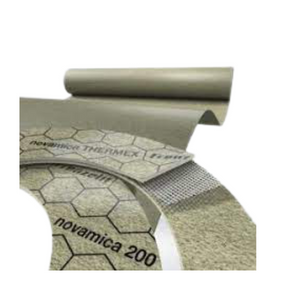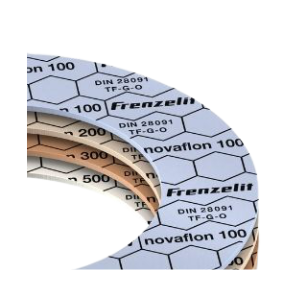Gasket Material
Gaskets create a pressure-tight seam between multiple stationary components, relying on a compression seal to prevent unwanted gas or liquid emissions. These seals are often intended to be resistant to pressure, temperature fluctuations, and in some cases, electrical or electromagnetic forces. Since it uses compression, a gasket is typically more malleable than the components it joins and is able to conform to the shape of the harder surfaces between which it is placed.
Gasket Types and Gasket Material
After determining that a gasket—as opposed to a shim or an o-ring—is the appropriate device for a given application, several other factors must be taken into account to choose a well-suited gasket design. There are numerous types of gaskets, though many share similar features and may be capable of handling related tasks. Some of the most common varieties of gasket include:
- Jacketed Gaskets: This form merges the efficiency and flexibility of soft gaskets (made of rubber or plastic) with the resistance and durability of an external metal coating. A single-jacket has soft filler with metal coverage along one face of the gasket, while a double-jacketed version has a fully coated metal facing, providing improved temperature, pressure, and corrosion resistance. Other variations include corrugated jacketed gaskets, and French Style jackets, which provide coating on either the inside or outside of the gasket.
- Solid Gaskets: Solid gaskets are typically formed of metal and are a relatively inexpensive alternative to jacketed gaskets. They have high thermal and pressure resistance, though they require higher compression force to form a seal and are usually effective only against surfaces that are harder than the metal itself.
- Spiral Wound Gaskets: This type of gasket is formed by combining metal with softer plastics or synthetic rubber in a winding shape, often reinforced with additional layers of metal without filler. Its unique design yields high thermal and physical stress resistance, coupled with flexibility and resilient sealing. Spiral wound gaskets are often used in piping, pumping, and heat exchange systems.
- Kammprofile Gaskets: The Kammprofile design contains a corrugated metal core covered with a malleable sealing material attached to both of its sides. This structure focuses physical stress onto the surface sealant, creating tight seals along the gasket’s edges while retaining the device’s flexibility and strong tensile core. Kammprofile gaskets provide reliable support in heat exchange systems and have improved cost-effectiveness due to their capacity for repair.





